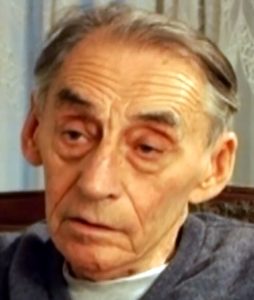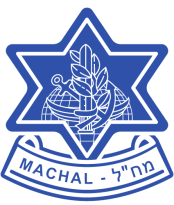Page updated 6/5/2023
Sol (Shalom) Baskin, a native Chicagoan, served almost three years in the U.S. Army as a rifleman with the 34 Infantry Division in Tunisia and throughout the Italian Campaign. In the course of 18 months of combat, he was involved in some of the most difficult battles, such as Casina, Anzio and the fight over the mountains in the Po Valley. In the course of his service he was given a combat commission, and served as an officer in the same unit for the duration of the war.
Coming from a Zionist family, he contacted the then Palestinian units of the British Army serving in Italy, and soon became involved in the clandestine activities prior to the establishment of the State of Israel.
Following the war, after a short visit home, he returned to Europe and became deeply immersed in the activities surrounding “Aliya Bet”. He took a leave of absence from this work, and traveled around the world as a merchant seaman. It was in China that he heard of the U.N. Resolution of the partition. He headed back to the States, and after an adventurous round-about trip, arrived in Israel in the late April 1948.
He immediately became part of the Haganah which later became the IDF, entering the ranks of the 3rd Alexandroni Brigade, first as platoon commander, then as company commander, and ending his service in the brigade as the CO of the 37th Reconnaissance Battalion. Active in Israel’s military and defense posture, he has not severed his relationship with the IDF to this day.
Printed with the kind permission of the artist and author Sol Baskin, a Machalnik from the USA and veteran soldier of World War II.
Excerpt from his art book “Mosaic of a Lifetime” 2007
Produced and printed by Total Print Ltd. Israel, 03-689-4333
SOL BASKIN: THE 1940’S VOLUNTEER WHO HAS EXPRESSED ISRAEL’S WORLD OF WARS
BY: GAD NAHSHON
On May 9th, the New York Art From Israel Gallery, located in Soho, will feature the unique exhibition of the American-born Israeli artist-writer Sol Baskin. Sol Baskin is a unique artist and sculptor. He has engaged as an officer and military commander in many wars from World War II to the Yom Kippur War. Perhaps General (Ret.) Arik Sharon understood the unique soul of Baskin as a fighter and as an artist: “I first met Sol Baskin when he volunteered to join the fight in Israel’s War of Independence. Having been a combat soldier and officer in the 34th Infantry Division of the United States Army, fighting in Africa and throughout the Italian campaign, his presence and experience were greatly appreciated and needed.
“What surprised me was to find out that he was a fine artist who was able to graphically portray those scenes seen only through the eyes of a combat soldier, with great sensitivity and true empathy. To be a participant and witness and able to graphically record for posterity the most turbulent period in Jewish history is a privilege few are given. “Sol Baskin, as an artist and sculptor, created some of the most poignant monuments, in member of those fallen soldiers, that only someone like him could do.
“I personally cherish his paintings and they are displayed prominently at my home where I see them each day, reminding me both of Sol and the characters and scenes he portrays.”
Sol Baskin was born in Chicago in 1921 and raised in a religious Jewish home. At the age of 18, he moved to California where he worked in shipyards; later, he worked with the Army Corps of Engineers in Alaska as a welding inspector. In late 1942, in Brooklyn, New York, he was inducted into the U.S. Army. From these, he was transferred to Camp Buttner, North Carolina and became a Private First Class in the 78th Infantry Division.
In the fall of 1943, his division landed in Salerno. At Cassino, Sol’s troops were decimated; of the original 500- men company, half never returned. Sergeant Hanson, Baskin’s officer in command, was also killed and Baskin assumed the position of acting Platoon Leader. When the U.S. Airforce bombed Monte Cassino, Baskin was wounded when a U.S. plane dropped a bomb behind his unit. Evacuated to a hospital, he returned to his unit three days later. He went on to Naples in the fall of 1943.
In the spring of 1944, Baskin went on to Anzio. Fighting at the beachhead, in battles along the drainage canals of Mussolini’s “model farms,” Sol was wounded with a bullet through the leg. He returned to his unit the next day. In late 1944, at the U.S. Army Headquarters north of Florence, Sol received a battlefield commission to Lieutenant, along with another Sergeant, John Vesey (later Chairman of the Joint Chiefs of Staff). Now an officer, Baskin took over his platoon. From the Apenines into the Po Valley and on to Bologna, they patrolled in the snow all winter, finally breaking the German line in the spring of 1945.
Sol Baskin, throughout his life, worked toward the development of the Jewish state. When the war ended, Sol was in San Remo. A soldier needed 85 points to return to the United States. Sol had 135, but chose to remain in Italy where he began to work with the Jewish Brigade of the British Palestinian Unit. In Italy, he met Sgt. Major Cohen, the representative of the Hagana (the Jewish Underground), that was laying the groundwork for the State of Israel. He worked with the Hagana until the Autumn of 1945, when Baskin returned to the United States.
He returned to Europe in 1946 to work for Aliya Bet which, then, conducted the illegal immigration of Jews into Palestine. His work took his to Paris, Marseille and Antwerp before heading to Norfolk, where he signed on as a merchant seaman on the SS Ponce de Leon and toured the world.
In the Spring of 1948, Baskin returned to Palestine and reported to the Battalion Commander of a cousin’s unit. Since the number of soldiers with battle-tested combat experience was minute, Sol was selected platoon leader. Though an instructor without any official rank, he ran the platoon and then the battalion, ultimately being promoted to Major: Battalion Commander. Taking over an armored company in the brigade, they moved south into the Faluja Pocket to fight 3000 Egyptian soldiers, a devastating loss for the Israeli soldiers. Faluja, now the Israeli city of Kiryat Gat, is the site of Baskin’s steel monument to the 89 soldiers in his company killed that night, along with a bronze monument commemorating the 459 fallen Alexandroni Brigade/Chativa Shalosh soldiers.
The three-week-long Tom Kippur War in 1973 was Sol Baskin’s fifth war: he did some of his finest illustrations and paintings during and after that war. He spent most of the war in the south, along the Central Sinai Front, with the fighting division of General Arik Sharon. He also spent time on the Golan Front, along the road to Damascus, high in the rocky, treacherous terrain of the Golan Heights. There he witnessed the recapture of the Hermon Mountain positions. His sketches, made during the fighting, of the pillars of smoke from burning tanks and exploding shells, the crossing of the Suez Canal and the battle- hardened, weary, Israeli soldiers dancing on Simhat Torah, were edited into a folder of limited- edition prints. His powerful oil paintings of the Sinai, of the abandoned Egyptian tanks and helmets among the sand dunes, will be exhibited for the first time at the New Art From Israel Gallery.
Sol Baskin was awarded two Silver Stars, the Bronze Star and two Purple Hearts by the United States Army. As an officer of both the American and Israeli armies, he has served both countries with distinction and heroism. As an active artist throughout five wars (World War II, the 1956 War, the Israeli War of Independence, the Six-Day War and the Yom Kippur War), his paintings and illustrations have succeeded in capturing, in al eloquent and timeless manner and from the perspective of a soldier in the heat of battle, the soldier’s life along with the pathos, pity, destruction and ravages of war.


